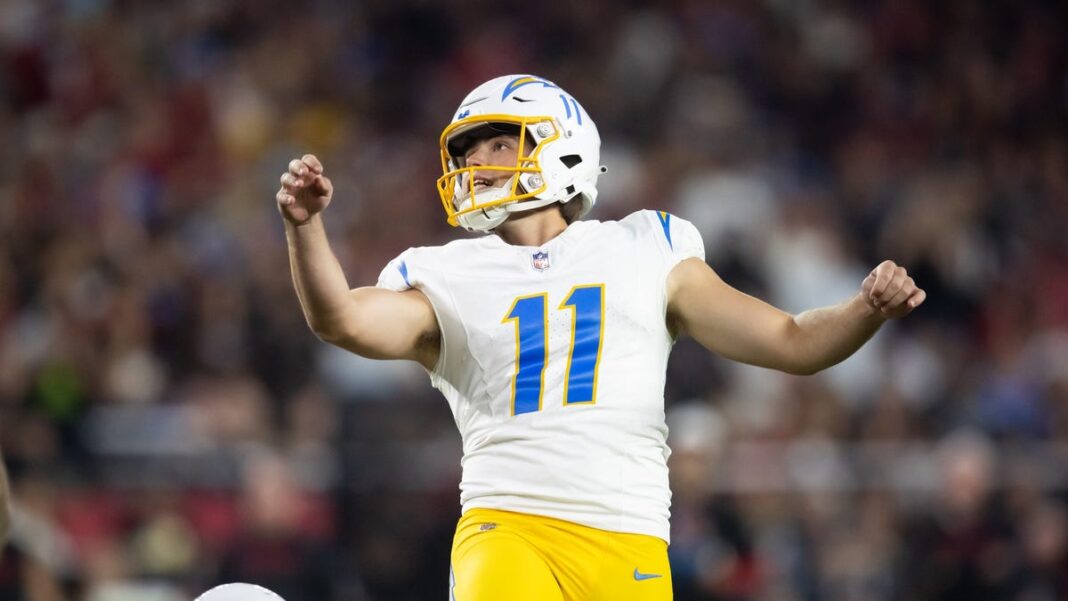Understanding the Fair-Catch Kick: Chargers’ Cameron Dicker Achieves a Milestone Since 1976
The Los Angeles Chargers made NFL history by successfully executing a fair catch kick, a feat that had not been accomplished in a game since 1976. But what exactly is a fair-catch kick?
As per NFL regulations, when a player signals for a fair catch, his team can opt to attempt a kick from that spot instead of beginning their next possession. If the kick successfully goes through the goalposts, it counts as three points — the same as a field goal.
During a fair-catch kick, there is no requirement to snap the ball, and the kicker has the advantage of a greater running start before making the kick. Essentially, it is akin to a kickoff but performed with a holder instead of a tee.
Dicker attempted a 57-yard fair-catch kick after a penalty was called on the Denver Broncos’ punt coverage team for fair catch interference at the end of the first half during Thursday night’s game. Chargers head coach Jim Harbaugh chose to go for the kick on an untimed down, meaning the Broncos could not return the ball if it was missed.
The Fair-Catch Free Kick Rule Explained
Here’s a direct quote from the NFL’s fair catch rules found in Rule 10, Section 2, Article 4:
“After a fair catch is completed or granted due to fair catch interference, the receiving team has the choice to initiate play by either a snap or a fair catch kick (which can be a drop kick or a place kick without a tee) from the spot of the catch or from a subsequent spot after any relevant penalties are enforced (3-9 and 11-4-3). This includes the 15-yard penalty from the receiving team’s 20-yard line if the fair catch happened or was awarded in the end zone due to fair catch interference or illegal contact after a fair catch.”
Furthermore, it’s important to note that the fair-catch kick is not classified as a free kick. The NFL only regards kickoffs, safety kicks, or onside kicks as free kicks, and it specifically designates that a fair-catch kick “is not a free kick.”
Also referenced in Rule 10, Section 2, Article 5:
“If time runs out during a play in which a player has called for a fair catch, the subsequent rules apply:
If the kicking team impedes a receiver who has indicated a fair catch, the receiving team may choose to extend the play by attempting a fair catch kick or executing a snap from scrimmage after any relevant penalties are applied.”
A Look at Fair-Catch Kick History
Dicker’s kick marks the first fair-catch kick attempted since Joey Slye executed one for the Carolina Panthers against the Tampa Bay Buccaneers in 2019.
It is also the first to result in points since 1976, when Ray Wersching of the then-San Diego Chargers successfully kicked one from 45 yards at the end of the first half against the Buffalo Bills.
With an impressive distance of 65 yards, Dicker’s fair-catch kick stands as the longest successful attempt in NFL history.

